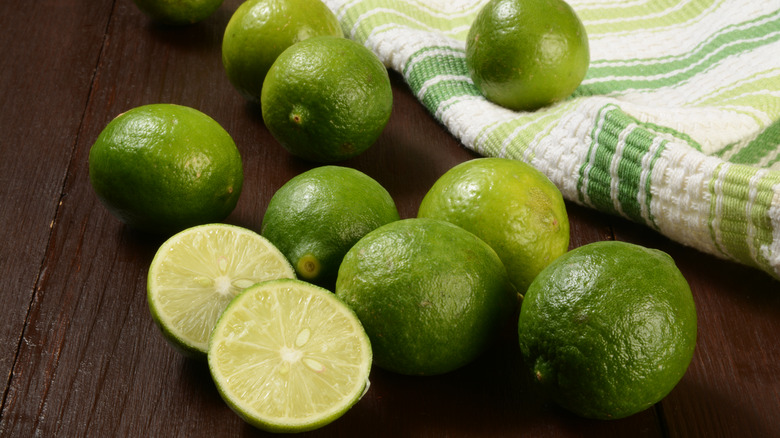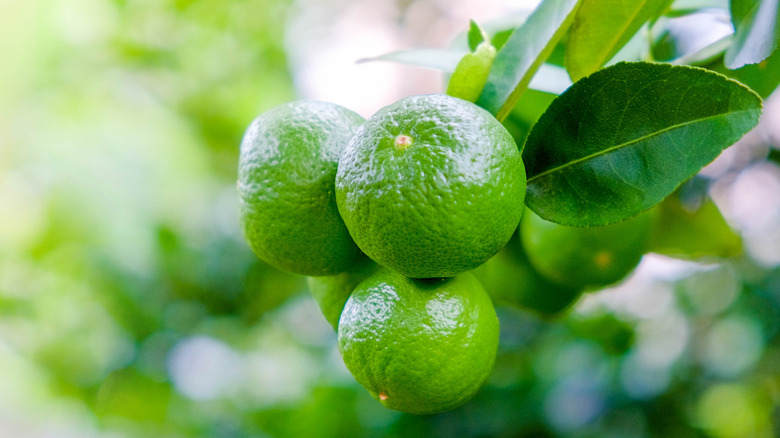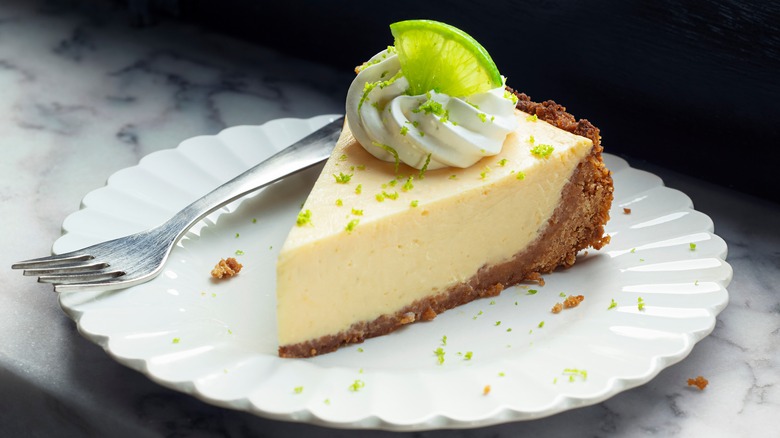What Makes Key Limes Different From Regular Limes?
Chances are when you think of limes, you think of limeade or key lime pie. Like any citrus beverage, limeade is a refreshing, summer thirst quencher. And key lime pie is arguably an American dessert staple. But did you know there really are two types of limes? Persian limes and key limes.
The most common limes in the United States are Persian limes, which were brought to the American continent in the 1500s, but didn't become household ingredients until the late 1800s. Persian limes, in particular, became popular after World War I.
There was once a time when key limes were all the rage in the United States. Before the introduction of Persian limes, key limes were actually commonly cultivated and embraced. Today, key limes are probably most associated with key lime pie, although these pies date back to the early 1900s. The earliest known recipe for the citrusy dessert dates back to 1931. However, Southern Living shares a lore about the dessert that claims the pie was invented in the 1890s by a woman known as "Aunt Sally."
Whether or not we have "Aunt Sally" to thank for key lime pies will remain a mystery. But if you're tired of conventional limes, you might want to give key limes a try.
Key limes are more bitter
Key limes, also referred to as Mexican limes or West Indies limes, were first cultivated in Southeast Asia, specifically the Indo-Malayan region. Key limes are usually smaller and rounder than Persian limes. The citrus fruit also typically turns yellow when ripe, giving it its tart and bitter flavor.
Key limes are sensitive to the cold, so they grow best in tropical and subtropical climates, hence their name, as the fruit were largely grown in the Florida Keys. Key limes are in season during the summer, growing in Florida and California between June and September.
Limes, including key limes, are bursting with nutrients; one lime contains a little over 20% of the suggested daily intake of vitamin C, according to Healthline, which can help support the immune system. Limes are also a good source of antioxidants and fiber. We'll raise a glass of limeade to that.
How to use key limes
It's clear that the key lime is the star of key lime pies, but they are versatile beyond being baked in pies. Because of its intense citrusy, bitter flavor, key lime is best suited for sweet desserts as its bitterness can help balance out that sweetness. Of course, you can replace conventional limes found in desserts with key limes. Keep in mind that key limes are smaller than typical limes, so be sure to have enough of them on hand. A Persian lime makes about two tablespoons of juice, while a key lime produces only two teaspoons.
Fresh key limes are best for limeade, adding a little zest to marinades, and garnishing drinks, like margaritas and mojitos. Just swap regular lime juice for key lime juice. And yes, key limes can also be swapped in for cooked dishes like Greek yogurt and lime chicken marinade or maple and lime roasted squash.


